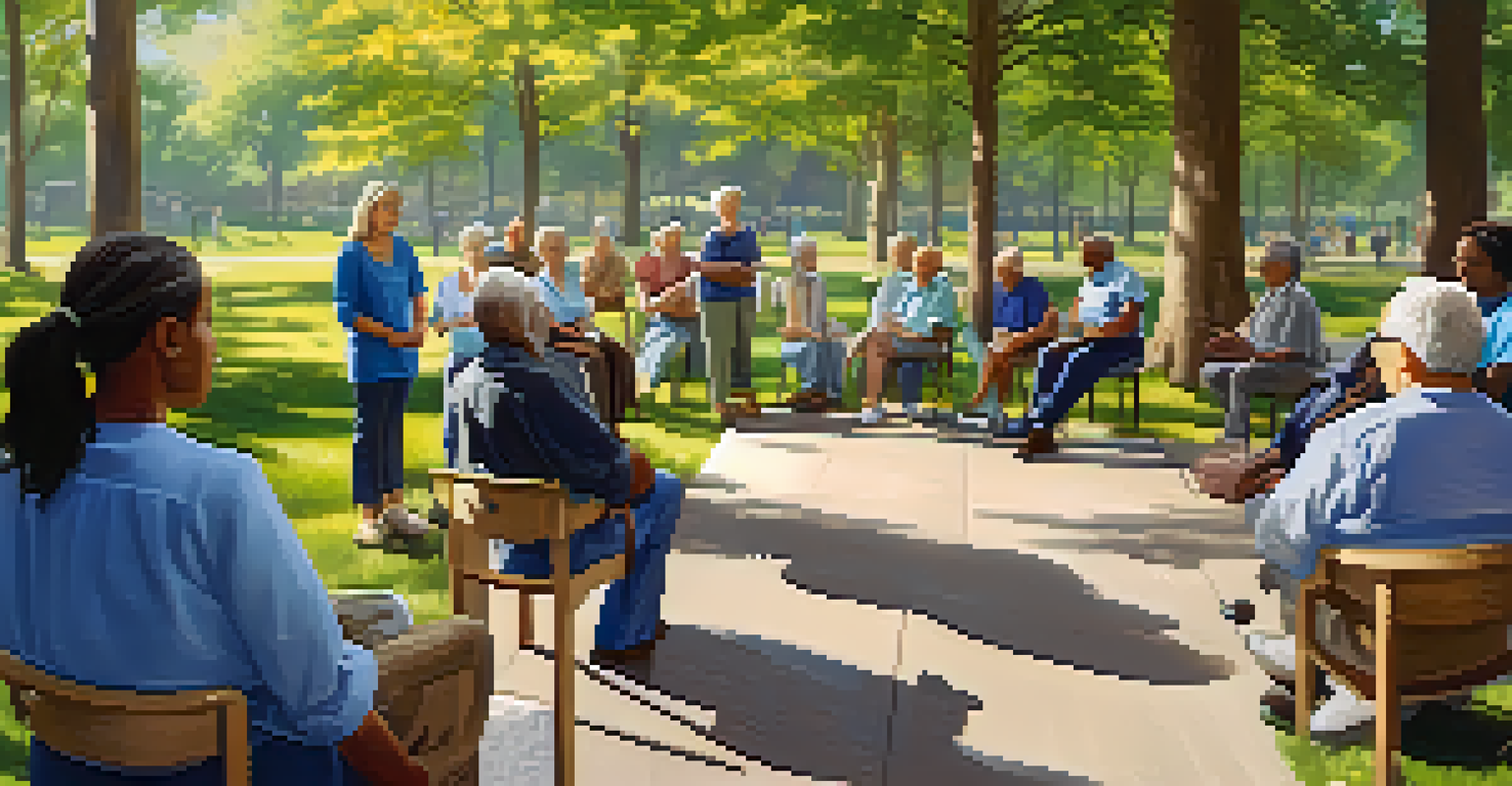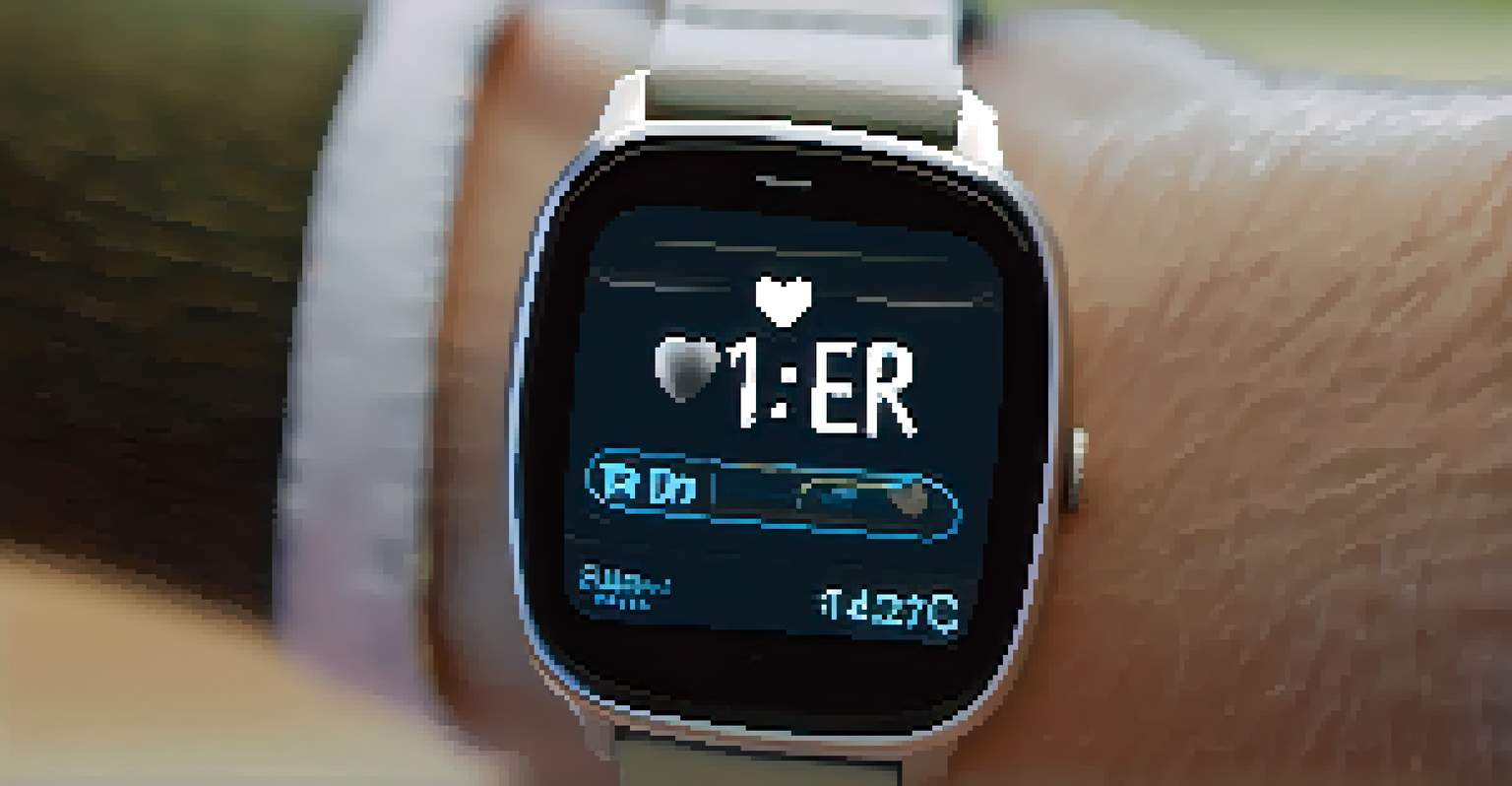The Role of Technology in Senior Personal Safety Training

Understanding the Need for Senior Personal Safety
As our population ages, the importance of personal safety for seniors becomes increasingly critical. Many older adults face unique challenges, including physical limitations and a higher susceptibility to accidents. This vulnerability highlights the need for effective safety training tailored specifically for seniors.
The greatest risk is the risk of doing nothing.
Safety training not only helps seniors learn how to protect themselves but also builds their confidence in navigating daily life. When seniors feel secure, they are more likely to engage in social activities and maintain an active lifestyle, which is vital for their overall health.
Moreover, personal safety training can empower seniors to recognize potential dangers, whether at home or in public spaces. By understanding risks and knowing how to respond, they can significantly reduce their chances of encountering harmful situations.
Technology as a Tool for Training Delivery
Technology has dramatically changed how we deliver training, making it more accessible and engaging for seniors. From online courses to mobile apps, these tools provide flexible learning options that can fit into a senior's lifestyle. This adaptability is crucial for those who may have mobility issues or prefer to learn at their own pace.

Virtual reality (VR) is another exciting development, allowing seniors to experience real-life scenarios in a safe environment. For instance, they can practice how to react in emergencies or navigate social situations without any real-world consequences. This immersive experience can enhance learning retention and boost confidence.
Safety Training Empowers Seniors
Personal safety training builds confidence in seniors, enabling them to engage in social activities and navigate daily life more securely.
Additionally, technology can facilitate remote training sessions, connecting seniors with trainers from the comfort of their homes. This approach not only saves time but also ensures that seniors can receive guidance tailored to their specific needs, regardless of their geographical location.
Wearable Devices Enhancing Personal Safety
Wearable technology, such as smartwatches and health monitors, plays a significant role in enhancing personal safety for seniors. These devices can track vital signs, detect falls, and even send alerts to caregivers or emergency services if needed. This level of monitoring provides peace of mind for both seniors and their families.
Technology is best when it brings people together.
For instance, a smartwatch equipped with fall detection can automatically call for help if it senses that the wearer has fallen and is unresponsive. This feature is particularly beneficial for seniors living alone, as it ensures they have immediate assistance if an accident occurs.
Moreover, wearables can encourage seniors to stay active and engaged in their health. Many devices include fitness tracking features, which can motivate seniors to maintain their physical well-being, further contributing to their overall safety and independence.
Mobile Apps: A Lifeline for Seniors
Mobile applications offer a convenient way for seniors to access safety training resources and emergency contacts. With a few taps on their smartphones, seniors can find information on local safety programs, emergency services, and even connect with friends or family for support. This digital connectivity is essential in fostering a sense of community.
Apps designed specifically for seniors often feature user-friendly interfaces that cater to their needs. For example, large buttons, simple navigation, and clear instructions make it easier for older adults to use these tools effectively. This accessibility ensures that technology serves as a helpful ally in their safety journey.
Tech Enhances Training Accessibility
Technology, including online courses and mobile apps, makes safety training more accessible and engaging for seniors, accommodating their unique needs.
Additionally, many apps include emergency alert functions that allow seniors to notify caregivers or emergency responders at the touch of a button. This immediate access to help can be a game-changer in critical situations, reinforcing the importance of having reliable technology on hand.
Online Communities for Shared Learning
One of the remarkable benefits of technology is its ability to connect seniors through online communities. These platforms allow older adults to share experiences, tips, and resources related to personal safety. By fostering a supportive environment, seniors can learn from one another and build confidence together.
For example, forums or social media groups dedicated to senior safety can provide valuable insights on dealing with specific challenges. Whether it’s discussing local crime trends or sharing self-defense techniques, these interactions can empower seniors to take proactive steps in ensuring their safety.
Moreover, online communities often feature expert advice from professionals in the field of elder safety. This access to credible information ensures seniors are well-informed and equipped with the knowledge necessary to navigate their world safely.
The Importance of User-Friendly Technology
When it comes to technology for seniors, ease of use is paramount. User-friendly designs that minimize complexity can significantly improve adoption rates among older adults. If technology feels too complicated, seniors may shy away from using it, which could hinder their safety training efforts.
For instance, devices with voice-activated commands can be particularly beneficial for seniors who may struggle with small buttons or intricate menus. This hands-free approach allows them to focus on learning and applying safety skills without the frustration of navigating complex interfaces.
Wearables and Apps Improve Safety
Wearable devices and mobile apps provide vital support for seniors, allowing for emergency alerts and health monitoring to enhance their personal safety.
Furthermore, providing clear instructions and support resources can help seniors feel more comfortable with new technology. Whether through video tutorials or one-on-one assistance, ensuring that seniors understand how to use their devices effectively is crucial for maximizing their benefits.
Future Trends in Senior Safety Technology
As technology continues to evolve, we can expect even more innovative solutions tailored to senior safety. Emerging technologies like artificial intelligence and machine learning are poised to enhance personal safety training by providing personalized experiences based on individual needs and preferences. This adaptability will make training even more effective.
For example, AI-driven apps could analyze a senior's daily activities and suggest safety tips relevant to their lifestyle. By tailoring recommendations, technology can help seniors stay proactive about their safety in a way that feels intuitive and personal.

Moreover, advancements in smart home technology will further enhance safety for seniors. From automated lighting systems to security cameras that can be monitored remotely, these innovations can create a safer living environment, allowing seniors to maintain their independence while also ensuring their well-being.